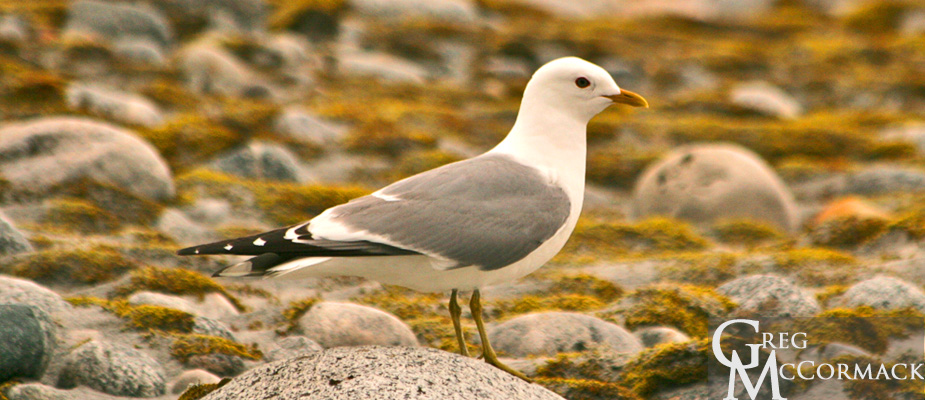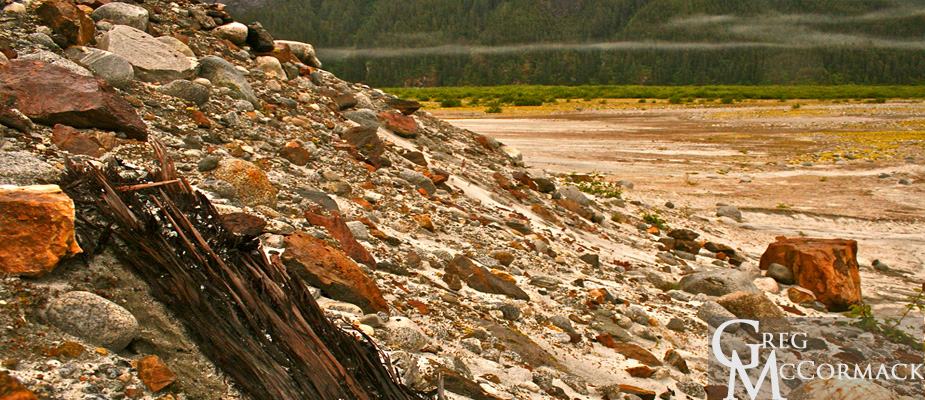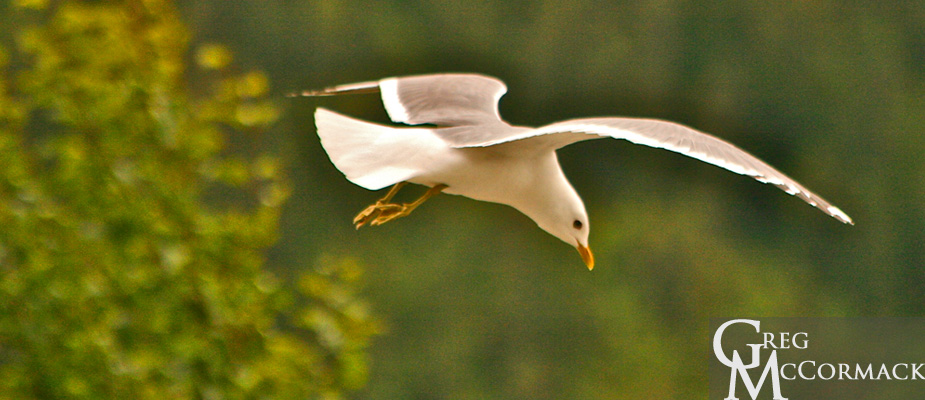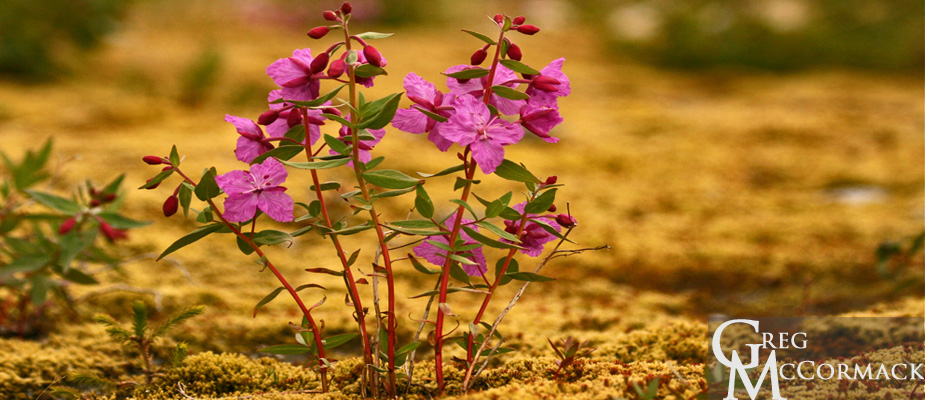Monday | June 20
August 8, 2011 by admin
Filed under InnerSea Discoveries
Thomas Bay and the Baird Glacier
Everyone is very excited for the opportunity to walk up to and on a glacier. First, however, guests have to endure a cold ride on small boats for 30 minutes up the glacial melt-water river to a steep bank drop-off. We disembark on basketball-sized boulders and make our way up to a sandy area where plants are recolonizing the deglaciated landscape.
I draw a large circle in the sand with a stick and receive some quizzical looks from my group of 18 hikers. I explain: “This large circle I’ve drawn is planet earth. I draw some lines north and south of the equator and semi-circles just below the North and South poles.”
I jam my stick into one of the dashed lines on my make-shift earth. “Tomorrow at 12 noon at this location 23-degrees north of the equator there will be no shadow cast. What is the name of this geographical position? Right you are, the Tropic of Cancer! What will happen at this circle just below the North Pole? Yes, exactly 24-hours of daylight…no sunset will be seen at the Arctic Circle at 66-degrees north latitude.”
“The long daylight is the reason the humpback whales swim from Hawaii and the gray whales from Mexico. With such long days in the northern hemisphere, plankton blooms are fed upon by krill and schooling fish which provides sustenance not only for whales but other marine mammals and seabirds as well.”

“The Arctic Tern flies up from Antarctica along with millions of migratory birds from central and south America. The long days provide just the right conditions for insects to multiply by the billions. They in turn allow our avian friends to raise not just one brood but two or three with the ability to feed young around-the-clock. If there is a term to describe Alaska and the Far North at this time of year it is “fecund”.”
Just a little bit higher from my scratchings-in-the-sand we are pleased to see so many gorgeous flowers blooming on the moss and lichen-covered rocks.
It’s about a mile walk past the recently colonized outwash plain. Small alders are the next seral stage of plant succession after the mosses and lichens. A few out-of-place sapling conifers such as the spruce and hemlock were seen. They are doomed because there is far too little nitrogen in the soil.
I mention that it will take more than a century from now before the alders give way to the conifers: “We’ll have to make reservations now and come back with our artificial hearts, brains and limbs to see the changes a century or two from now….”
Indeed, glacial rubble to temperate rainforest is a 200-year process from a recently deglaciated landscape. In the wake of the receding glaciers, forests advance and following the greening landscape are mammals, first the herbivores and then the carnivores.
I spot inter-stadial stumps in the terminal moraine. Otherwise known as “fossil wood” which John Muir described in his book “Travels in Alaska”. He actually burned it during his campfires with his Tlingit Indian guides and Presbitarian Missionary friend Samuel Hall Young. Carbon dating techniques in Glacier Bay National Park and Preserve put some of these non-decomposed stumps at 1000’s of years old…at least up until the point where they are exposed to air from erosion, after millennia buried in rubble.

Our trek across the glacier is a favorite activity for our guests. There is the boot-sucking mud that grabs at our boots during our walk. Also, many features of the glacial surface and moraine just in front of the snout keeps you contemplating, for example: What forces are at work to produce such bizarre sand-covered pyramids? They stand several feet high and are covered with fine sand. Most seem to be along a transverse and sutured closed crevasse.
We head back elated from our days adventure for our small boat trip back to the mother ship.




Comments
One Response to “Monday | June 20”Trackbacks
Check out what others are saying about this post...[…] Monday | June 20th […]